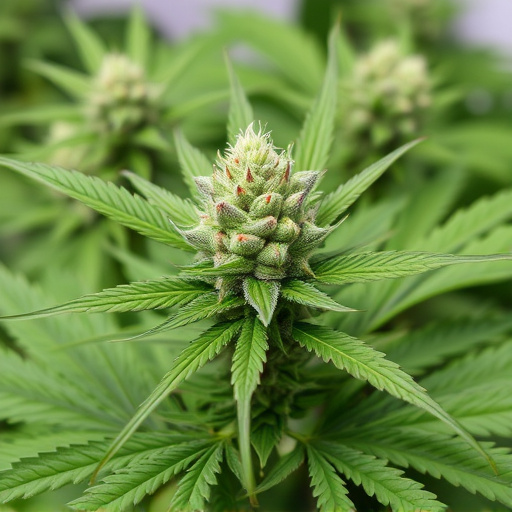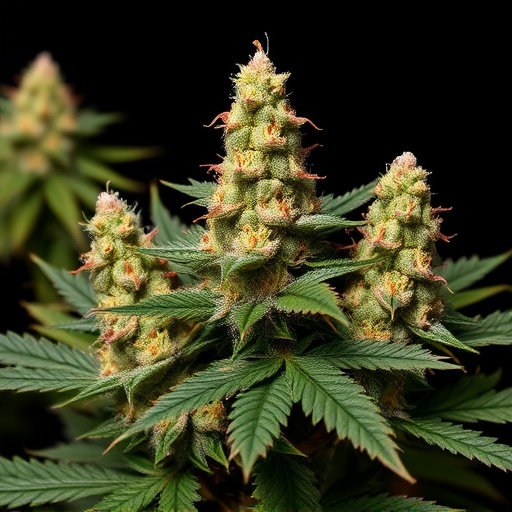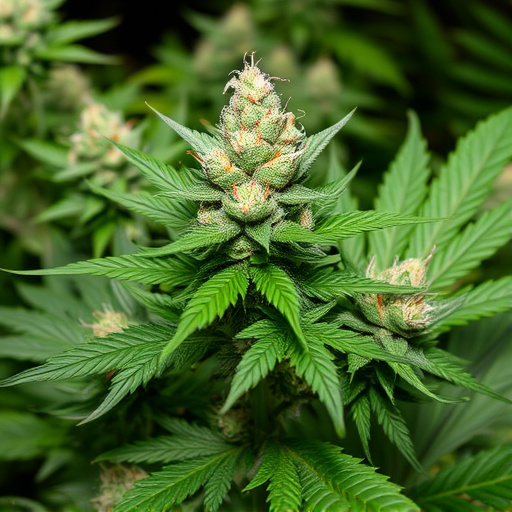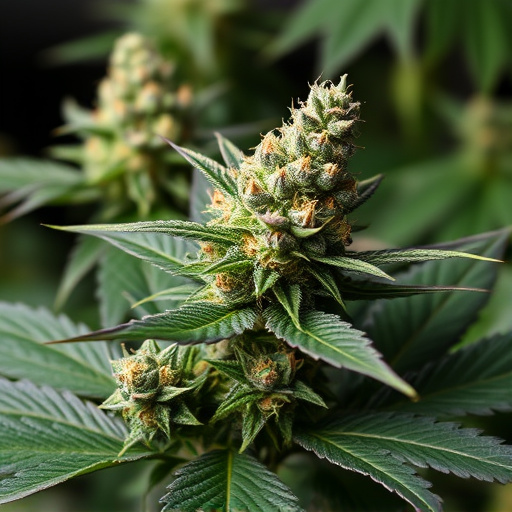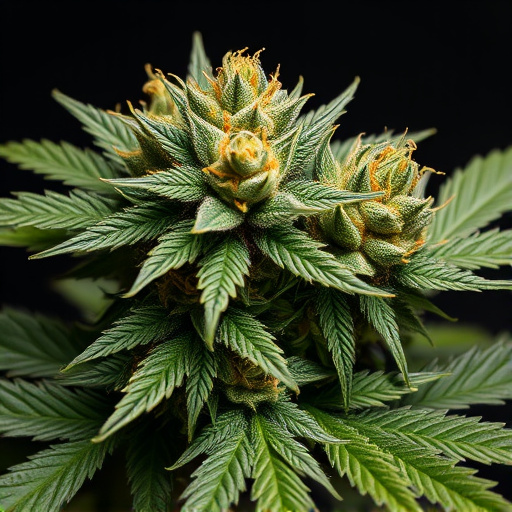Indica dominant strains, rich in THC and myrcene, exhibit shorter detection windows due to their intense effects but longer metabolization times. Genetic variations influence cannabis growth and elimination, with CBD slowing metabolism and potentially extending detection periods, complicating predictions for users in legal regions. The interplay between THC and CBD's pharmacodynamics further contributes to the complexity of cannabis detection times.
“Uncovering the elusive timing of cannabis detection is a complex dance between biology and chemistry. This article delves into the multifaceted factors influencing how long cannabis remains detectable in the body. From the genetic makeup of plants, specifically exploring the impact of indica dominant strains, to individual metabolic variations and testing methodologies, each element plays a critical role. Understanding these factors is essential for those navigating the legal and personal implications of cannabis use, ensuring informed decisions based on accurate detection timelines.”
- Genetics and Cannabinoid Composition
- – Influence of indica dominant strains on detection times
- – Variation in THC and CBD levels and their impact
Genetics and Cannabinoid Composition
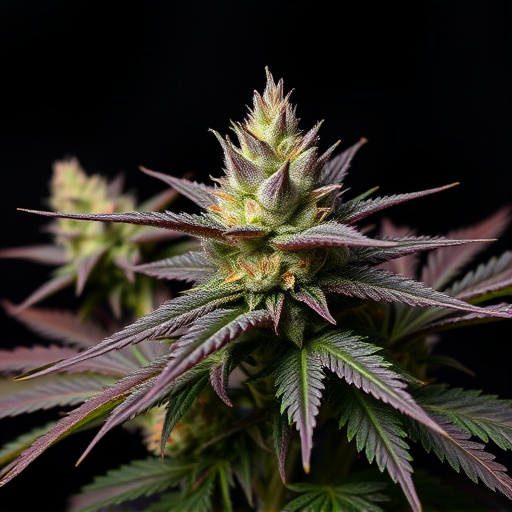
The genetics and cannabinoid composition of cannabis play a significant role in determining detection times. Indica dominant strains, for instance, tend to have higher levels of THC (tetrahydrocannabinol) and lower levels of CBD (cannabidiol) compared to sativa-leaning varieties. This unique chemical profile affects how quickly and intensely the effects of cannabis are felt, as well as its metabolism in the body. Faster acting strains may lead to shorter detection windows, while those with higher CBD content can prolong the time it takes for cannabinoids to be detected in an individual’s system.
Additionally, genetic variations influence the plant’s growth patterns, such as its height, yield, and flowering time. These characteristics indirectly impact detection times since they can affect how easily cannabis is metabolized and eliminated from the body. Understanding these genetic factors is crucial when considering the timing of cannabis use, especially in regions where it remains illegal or subject to stringent testing requirements.
– Influence of indica dominant strains on detection times
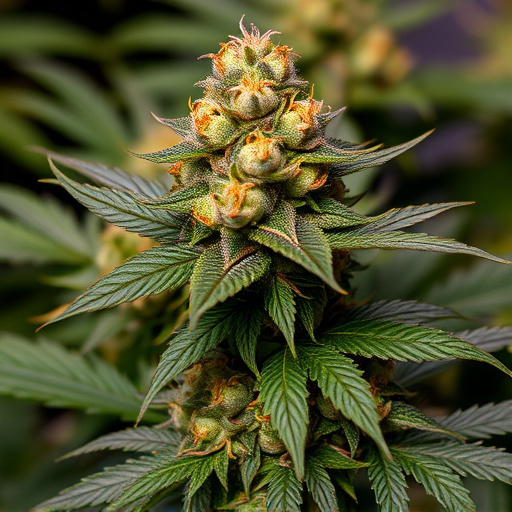
Indica dominant strains play a significant role in cannabis detection times, often leading to longer windows between consumption and detectability. This is primarily due to their unique chemical composition; indica plants tend to have higher levels of myrcene, a terpene known for its sedative and relaxing effects. Myrcene has been shown to interact with the body’s endocannabinoid system more slowly than other terpenes, resulting in a gradual breakdown in the system after consumption. This slower metabolization extends the time it takes for cannabis to be detected in tests, making indica-dominant strains a factor to consider when predicting detection times.
Additionally, the higher concentrations of myrcene in these strains can influence how the body processes THC (tetrahydrocannabinol), the primary psychoactive compound in cannabis. Studies indicate that myrcene may enhance the bioavailability of THC, leading to more varied outcomes in terms of detection times. This interaction further complicates predictions and underscores the need for a nuanced understanding of how different cannabis strains, particularly indica dominant ones, can impact the timing at which their use becomes detectable.
– Variation in THC and CBD levels and their impact
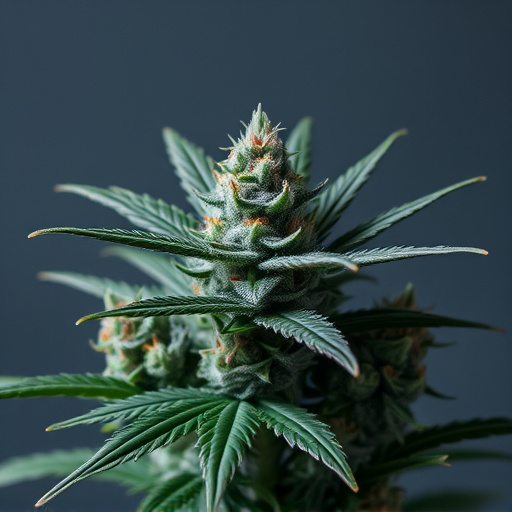
Cannabis detection times are influenced by a myriad of factors, with one of the most significant being the variation in THC (Tetrahydrocannabinol) and CBD (Cannabidiol) levels. Indica dominant strains, known for their relaxing and sedative effects, often have higher THC concentrations, leading to potentially longer detection windows compared to Sativa or hybrid varieties. This is because THC is the primary compound responsible for the psychoactive high associated with cannabis use.
The presence of CBD, on the other hand, can impact detection times indirectly. While CBD itself has a lower psychological profile and may even counteract some of THC’s effects, it plays a crucial role in slowing down metabolism. Higher CBD levels in indica strains might contribute to a milder metabolic breakdown of THC, potentially extending the time it takes for traces to become undetectable. This interaction between THC and CBD highlights the complex nature of cannabis pharmacodynamics and its implications for post-use detection.
In conclusion, various factors, including genetics and cannabinoid composition, significantly influence cannabis detection times. Indica dominant strains, with their unique cannabinoid profiles, can extend detection periods due to higher CBD levels and varying THC concentrations. Understanding these variations is crucial for individuals aiming to manage the duration of cannabis’ effects, especially in legal contexts where specific detection windows are enforced.




